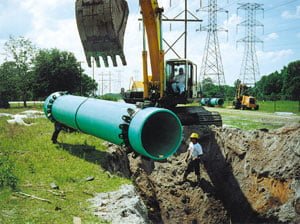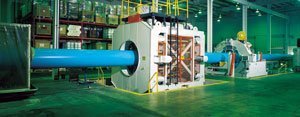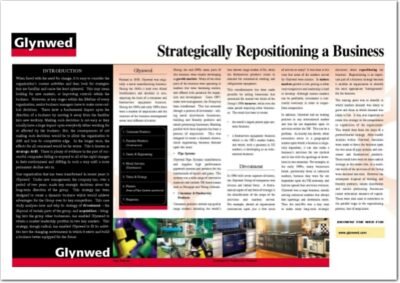
When faced with the need for change, it is easy to consider the organisation’s current activities and then look for strategies that are familiar and cause the least upheaval. This may mean looking for new markets or improving controls within the business.
However, at key stages within the lifetime of every organisation, senior business managers have to make more radical decisions. These have a fundamental impact upon the direction of a business by moving it away from the familiar into new territory. Making such decisions is not easy as they usually have a huge impact upon everybody either working for or affected by the business. But, the consequences of not making such decisions would be to allow the organisation to drift and lose its competitive edge. In the longer term, the effects for all concerned would be far worse.
This is known as strategic drift. There is plenty of evidence in the past of successful companies failing to respond to all of the rapid changes in their environment and drifting in such a way until a more permanent decline sets in.

One organisation that has been transformed in recent years is Glynwed. Under new management, the company has, over a period of two years, made key strategic decisions about the long-term direction of the group. This strategy has been designed to create a dynamic business which would achieve advantages for the Group over its key competitors.
This case study analyses how and why its strategy of divestment – the disposal of certain parts of the group, and acquisition – bringing into the group other businesses, has enabled Glynwed to obtain a market leadership position in two key markets. This strategy, though radical, has enabled Glynwed to fit its activities into the changing environment in which it exists and build a business better equipped for the future.
Growing the business

Formed in 1939, Glynwed was originally a metal manufacturing business. During the 1960s it took over Allied Ironfounders and doubled in size, acquiring the basis of a consumer and foodservice equipment business. During the 1980s and early 1990s there were a number of acquisitions and the structure of the business encompassed seven very different divisions.
During the mid-1990s some parts of this business were clearly developing in growth markets. Many of the other parts of the business were operating in markets that were becoming mature, and offered little potential for expansion and development. Since 1997, under new management, the Group has been transformed. This has occurred through a process of divestment – selling metal distribution businesses, building and foundry products and metals processing businesses.
Running parallel with these disposals has been a process of acquisition. This was designed to create a dynamic international engineering business focused upon two areas:
- Pipe Systems – Glynwed Pipe Systems manufactures and supplies high performance pipework systems and products for the transmission of liquids and gases. The systems use a wide range of innovative materials and include UK brand names such as Durapipe and Viking-Johnson.
- Consumer & Foodservice Products -Consumer products include top quality range cookers including the world’s best known range cooker AGA, while the foodservice products relate to demand for commercial cooking and refrigeration equipment. This transformation has been made possible by selling businesses that accounted for around two thirds of the Group’s 1996 turnover, while over the same period acquiring other businesses.
The result has been to create:
- the world’s largest plastic pipe systems business
- a foodservice equipment business which is the UK’s market leader, and which, with a presence in US markets, is developing as an international business.
Divestment

In 1996 with seven separate divisions, the Glynwed Group of companies was diverse and lacked focus. A fundamental aspect of any form of strategy is the identification of the scope of the activities and markets served. For example, should an organisation concentrate upon just a few areas of activity or many? It was clear at this time that some of the markets served by Glynwed were mature. In mature markets growth is low, pricing is often very competitive and leadership is hard to develop. Although mature markets can be profitable, investment is constantly necessary in order to outperform competitors.
In addition, Glynwed had no leading position in any international market and was far too dependent upon its activities within the UK. This can be a problem. As history has shown, when recessions occur in a geographical market upon which a business is singularly dependent, it can also make a business’ activities far too cyclical and in line with the upswings or downturns in one economy. For example, in the early 1990s, many businesses failed, particularly those in industrial markets, because they were far too dependent upon the UK economy, and had not spread their activities overseas.
Glynwed was a large business, mostly serving industrial markets that always feel upswings and downturns more. Thus the mid-90s was a key time to make some long-term strategic decisions about repositioning the business. Repositioning is an important part of a business strategy because it enables an organisation to identify the most appropriate ‘battlegrounds’ for the business.
The starting point was to identify in which markets demand was likely to grow and those in which demand was likely to fall. It was also important to relate this strategy to the competencies or capabilities of the organisation.
This would then form the basis of a product/market strategy. After careful analysis within Glynwed, decisions were made to focus the business upon the two areas of pipe systems and consumer and food service products. There could have been no more radical strategy as this meant that, as a result, two thirds of the activities of the Group were declared non-core. However the subsequent disposal of building and foundry products, metals distribution and metals processing businesses raised substantial amounts of capital. These were then used to contribute to the parallel stage in the repositioning process, that of acquisition.
Acquisition

There are a number of reasons for acquiring other businesses. The foremost is the speed at which it enables an organisation to respond to changes in its business environment and enter other product and market areas.
In many instances, particularly where heavy investment is required (e.g. engineering), developing a strategy internally would just not be practical since the process of internal development would be too slow. Acquisition is not only about factories and assets, it is also about knowledge and markets.
Buying a company can help a Group improve its research and development expertise so that it can meet the demands of a more globalised marketplace. Mergers and acquisitions in global markets also help to improve and broaden the range of products and services an organisation provides, whilst at the same time reducing unit costs.
The new strategic acquisitions made by Glynwed were designed to improve the strength of the core businesses of pipe systems and consumer and foodservice products. Thus the company could compete more successfully in growth markets worldwide. The parallel acquisition programme included:
For the pipe systems business, the acquisitions helped to create a better geographic balance for the Group. It has now became a world leader, supplying a wider range of complementary products with 45 manufacturing locations and 121 owned distribution outlets in 28 countries. Each acquisition added synergy to the Group, providing an expanded product range and global reach. Synergy is usually termed 1 + 1 = 3. It means that through acquisition, synergy occurs where activities or processes complement each other so that the combined effect is greater than the sum of the parts.
In the area of food service equipment the strategy strengthened the UK portfolio of brands and products, with synergies emerging from technologies such as blast chilling, electronic temperature control and high efficiency power units. The acquisitions also created a better framework for a more internationalised presence.
International growth

A key acquisition made by Glynwed in 1999 was that of IPEX, a Canadian business that had an outstanding strategic fit with Glynwed. IPEX is a 100% core pipe systems business, which has, given its geographical position, developed a major manufacturing presence in North America.
By acquiring IPEX and integrating it into the Glynwed business, the Group was developing a wider geographical spread, extending its product and expanding its technological capability. All of this created a new base for growth.
IPEX has:
- one of the lowest costs in the industry, with high levels of investment
- a full product line in carefully selected markets
- 14 plants located geographically near to main markets
- sales coverage in both Canada and the US.
By acquiring IPEX at a time when plastics penetration was less in North America than in Europe, Glynwed now has a major opportunity to grow in its North American markets, using its European technologies.
As a low-cost producer with a good market position, the IPEX acquisition has now become the cornerstone of Glynwed’s growth, with an unrivalled opportunity to move further into fast-growing markets in North America.
Conclusion

Divestment and acquisition has enabled Glynwed to use its core competencies in key areas of growth. The diverse nature of the business and the mature background to some market areas required decisive and effective action. This would build a new type of organisation, supported by an organisation structure that would enable it to succeed.
With growth opportunities in both pipe systems and foodservice equipment, and the creation of a new market position designed to serve these two markets, Glynwed is now both stronger and more globally focused, with the opportunity to provide better returns for its shareholders.
Having done so much in so short a period of time, even this is not the end of the story. The future strategic direction of the business is clear. With the prime objective of improving earnings growth, Glynwed has to consolidate and further extend its global business.
A key enabling element of this has involved becoming first movers in e-business. For example, the launch of the aga-rayburn.com and other related sites will open up a portal for other providers, enabling both Glynwed and its partners to develop another route to the market. Such an approach helps Glynwed to improve its strategic capability, providing a better fit between the organisation and its ever-changing environment.
 Strategically repositioning a business (PDF)
Strategically repositioning a business (PDF) 